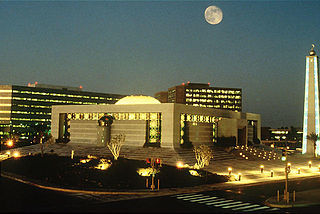
News that the Saudi government will sell off a 5% stake in its oil champion, Saudi Aramco, is arguably the biggest hydrocarbons policy shift since the 1970s, turning a page on the post-1973 nationalisation of the region’s oil producers.
However, it has also become the centerpiece of the government’s increasingly radical response to the sustained oil price slump, as outlined in its newly launched “Vision 2030” plan.
Under the Aramco sell-off proposal, the corporation would be turned into a holding company, with its various downstream and non oil arms (such as presumably its petrochemicals, marketing, power and even hospital divisions) eventually wholly or partly sold off.
Such a strategy is not entirely novel in the region, with, for example, the Qatari state oil company, Qatar Petroleum, divesting its controlling stakes in its petrochemicals, fertiliser and steel subsidiaries back in 2003, as part of the formation of a holding company, Industries Qatar.
However, Industries Qatar was a positive minnow compared to the industrial whale that is Aramco. According to Mohammed bin Salman, Aramco will be valued at a whopping US$2trn—comfortably making it the biggest company in the world (in comparison, the current global title holder is Apple, with a market cap of US$575bn). Yet, despite its scale, the number looks realistic.
Quite simply, Aramco has no peer: it produces one in nine of the oil barrels produced globally; its production costs are the lowest in the world (lifting costs are only around US$2/barrel); and it claims to have reserves of 261bn barrels (compared with, for example, Exxonmobil’s 14bn barrels of liquid reserves).
Yet floating a 5% share in Aramco will not be a panacea for the economy’s problems (including a whopping fiscal deficit of some 17.8% of GDP last year), and nor will it necessarily be smooth sailing for Aramco itself.
First, the company is famed for its secrecy. For years observers have questioned its claimed reserves, and the company’s approach to corporate governance will interest not only investors but also the Saudi population as well (who have long questioned the siphoning of the country’s oil wealth to the kingdom’s thousands of princes).
In addition, the Saudi (and Gulfi more generally) practice of ring-fencing share offerings in privatisations for the local population could prove tricky in this instance: not only is US$100bn a huge sum to raise locally, but it is also equivalent to around a quarter of the Saudi stockmarket’s market cap.
Which could be an issue not only for this divestment, but potentially for others. In particular, under Vision 2020, the kingdom would use the proceeds from the Aramco divestment to finance a US$2trn sovereign wealth fund, whose assets would provide the returns necessary to shield the economy from the vicissitudes of the oil markets.
However, half of this US$2trn is intended to come from selling the state’s stakes in real estate and industrial ventures (beyond Armco)—a figure that appears overly ambitious. In the UK, for instance, which has been the forerunner of privatisations globally, the government has only raised around £200bn (less than US$300bn) since 1979 through divestments of state entities.
If the government is serious about its US$2trn figure, it may find that it needs to sell off a far bigger chunk of its oil champion than it currently is anticipating.
Robert Powell is Middle East and Africa Analyst at the Economist Intelligence Unit
Recommended for you
